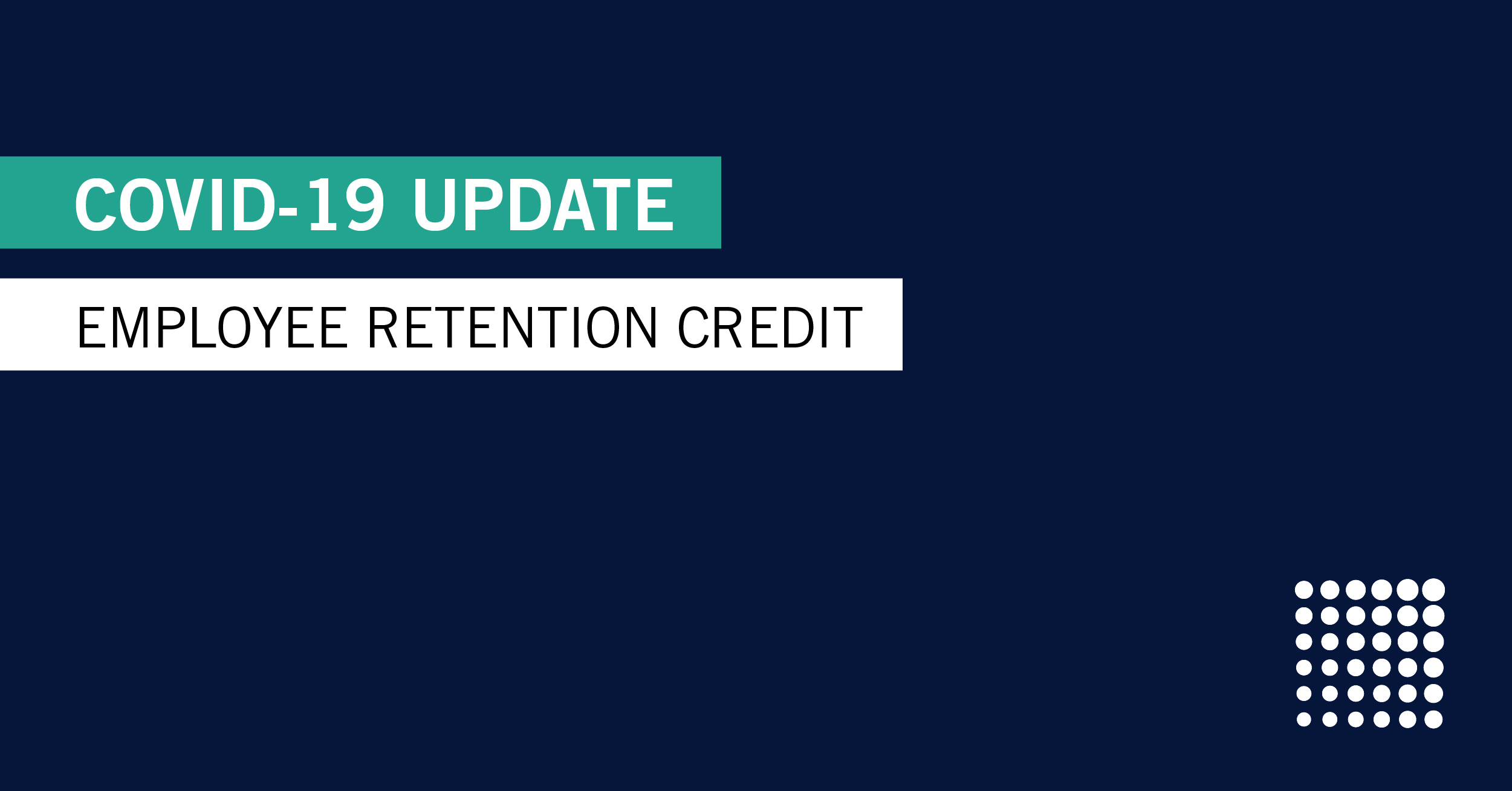When and how to use this alternative to a PPP loan
The biggest question most clients have today is when to apply for the Paycheck Protection Program (PPP) loan. With the SBA rules determining mandatory funding dates, each business is now faced with an important decision. If you haven’t yet, please read our blog and watch the webinar as Partner Dan Wicker presents the options available to small businesses and outlines a decision tree to aid in defining your path.
An alternative to PPP loans
Most practices will recognize the greatest benefit from the PPP Loan, if taken out at an optimal time to receive maximum forgiveness when your business is back open and operational. However, if reopening continues to get delayed and the PPP is no longer available, an alternative option for your practice is to take advantage of the Employee Retention Tax Credit (ERC). This credit is available to employers for wages paid during a quarter impacted negatively by COVID-19.
We feel an understanding of this tax credit will help guide you as you consider the decisions available to you, and whether you may be comfortable to wait longer to apply for the PPP loan and have a better opportunity for a higher percentage of forgiveness.
What makes you eligible to claim the ERC?
The ERC is available starting March 12, 2020, and ending Dec. 31, 2020, for those that carry on a trade or business. However, this does not include any small business who takes advantage of a PPP loan. In addition, self-employed individuals including business owners and family are not eligible for the ERC for their self-employment earnings.
In order to qualify for the ERC you must meet one of the following requirements:
- Your business is either fully or partially suspended during any calendar quarter in 2020 due to orders by an appropriate governmental authority due to COVID-19. This includes all dental practices across the country as these have been instructed from state governments to close to all non-essential procedures.
- Your business has experienced a significant decline in gross receipts in any calendar quarter in 2020. In order to meet this requirement, your gross receipts must fall below 50% of the gross receipts from the same quarter in 2019. The eligibility period then ends in the quarter after the significant decline in gross receipts exceeds 80% of your gross receipts from the same quarter in 2019.
Applicability to CWA clients:
Many CWA practices will qualify for the ERC in Q1 2020, as they were mandated to partially suspend operations. This will make them eligible for the ERC beginning on March 12, 2020 (more on credit amount below).
All CWA practices will qualify for the ERC in Q2 2020 due to partial suspension. Beginning in Q3 2020 for those practices no longer required to partially suspend operations, the second test will come into play. If gross receipts in Q3 2019 were $500,000 then if gross receipts are $250,000 or less in Q3 2020 the practice will be eligible for the ERC in Q3 and Q4 2020.
Please note, if there is not a 50% decline in gross receipts in Q3 then most CWA practices will still meet the requirements for the ERC in Q3 since Q2 gross receipts are likely to be below the 50% test.
As a result, we feel all CWA practices that do not take advantage of a PPP loan will be eligible for the ERC for both Q2 and Q3 2020.
How much is the ERC worth?
The ERC is a fully refundable tax credit equal to 50% of qualified wages (including employer paid qualified health plan expenses) up to a maximum of $10,000 in eligible wages across all calendar quarters. This means the credit is capped at $5,000 per employee for 2020 wages. For businesses with less than 100 full-time employees, all 2020 wages qualify under the general rule. There are some special cases which would disqualify, for example any wages paid under the Families First Coronavirus Response Act (FFCRA), since another tax credit is already available for these wages.
Example: An eligible employer pays an employee $6,000 in qualified wages in Q2 2020 and $8,000 in qualified wages in Q3 2020. The employer can claim a credit of $3,000 for Q2 2020 and $2,000 for Q3 2020 due to the overall limit of $5,000 in maximum available credit across all quarters.
When calculating the true benefit of the credit it is important to understand that the CARES Act states that the deduction for wages will be reduced by the amount of credits received. This means an employer who is in the 35% marginal federal tax bracket will have the credit reduced by $1,750 for a net credit of $3,250.
For a practice with 7-10 full-time employees this credit could be as much as $22,000 to $32,000. The credit will be received immediately by not paying employer matching social security taxes and refund from the IRS if necessary.
Applicability to CWA clients:
With many CWA client employees on unemployment, the ERC will be available once these employees are hired back. Some CWA clients will receive a 50% credit for wages paid from March 12 through March 31, 2020. Most CWA clients will receive a 50% credit for wages paid in Q2 and Q3. For an employee working 32 hours per week at $20/hour the credit will be approximately $320 per week. With a maximum credit of $5,000 if employees work 16 weeks during eligible quarters you will receive the full $5,000 per employee.
Key clarifying points
- The ERC is not available for the owner or any relative of the owner working in the practice.
- The ERC is only available for wages paid in 2020.
- The maximum credit is $5,000 per employee. This credit must be reduced by your marginal federal tax rate.
- The ERC is refundable and is received as a credit against employer paid social security taxes on Form 941.
- Any wages paid via the FFCRA are not eligible to be counted towards the credit calculation.
Using the ERC in your Decision Tree
- The ERC should be considered in your decision tree when thinking through when to submit your PPP application. If you were to hold your application, and in doing so “miss out” on receiving a PPP loan, this credit would then be an option. We recommend you calculate a ballpark true tax benefit based on employees in your practice.
- This total can then be added to the $10,000 grant from the EIDL. Since the EIDL and PPP cannot be used on top of each other, the $10,000 grant from the EIDL can now be viewed as a true benefit.
- You also need to consider any unemployment benefits you and your spouse are receiving. If you do not get the PPP loan immediately, you would still be eligible for the unemployment benefits until the time you re-open and start paying yourself wages again.
- The sum of unemployment benefits for you and your spouse during an eight-week period, your ERC and EIDL is the benefit you would receive in this scenario. The difference between this benefit, and your loan forgiveness by taking the PPP prematurely, is what you need to be comfortable losing if the PPP funds are not available when you need it.
We will continue to provide updated information and resources to help you navigate the best decision for your practice during this time. Bookmark our COVID-19 resources page for the latest.














